[ad_1]
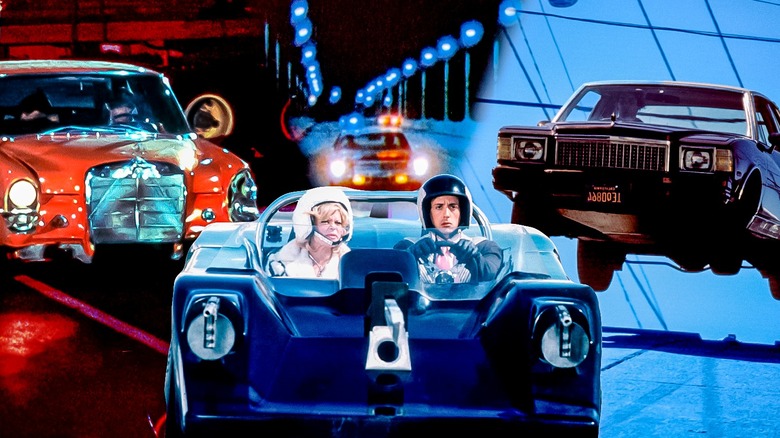
Nothing beats a good car chase in a movie. These wacky stunts are a hallmark of modern Hollywood blockbusters, but they’ve been around since silent films. Nowadays, car-centric flicks conjure images of “The Fast & Furious” and “Mad Max” franchises. However, action doesn’t always have to be the focus.
Cars playing an integral part in developing a main character always hold more weight for me than a gonzo chase scene. We see a sense of isolation from society in movies like “Taxi Driver” and “Drive.” Meanwhile, in John Carpenter’s 1983 horror, “Christine,” the auto becomes a ruthless death machine. The Stephen King adaptation makes for a clever metaphor about bullying, acceptance, and toxic masculinity in teens.
It would be unfair to say that a car movie can’t be enjoyed without the profound social commentary of a Martin Scorsese film or the brooding touches of Nicolas Winding Refn. Sometimes, we crave high-octane thrills and what better way to get them than in a car? Let’s wave a checkered flag and race down this list of 12 underrated car movies you need to see, from the meatier watches to some which are just plain enjoyable.
Holy Motors
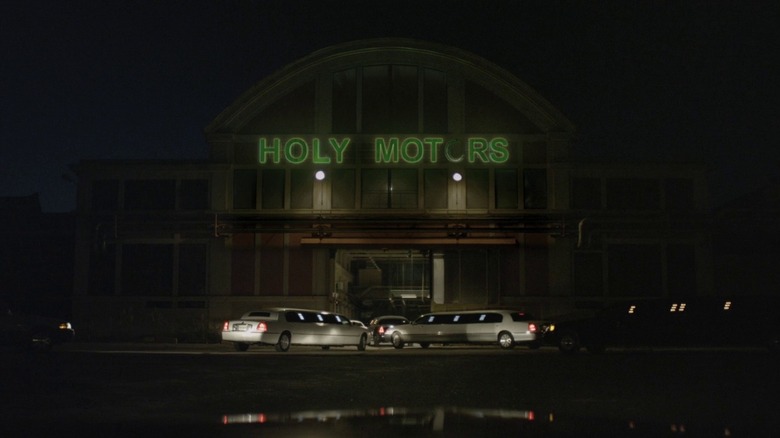
Leos Carax’s “Holy Motors” isn’t for everyone. This 2012 fantasy drama deconstructs any narrative cohesion you’d expect from a modern film. We meet Monsieur Oscar (Denis Lavant), a wealthy actor chauffeured to various appointments in a limousine. Oscar assumes multiple identities in each meeting, including an older man, an assassin, a leprechaun, and a homeless woman. After each visit, our protagonist seems to learn a new lesson, but he immediately discards it for his next role.
So, what’s the point of all of this? One interpretation is that it’s an ode to classic cinema. With homages to surrealist auteurs such as Luis Buñuel and Jean Cocteau, “Holy Motors” takes you on a journey through filmmaking. A nod to Georges Franju’s “Eyes without a Face” (one of the best French horror movies) is also evident, with Edith Scob wearing the same mask she wore in the 1960 gem.
At one point, Oscar comments that he’s losing passion for his craft. “Holy Motors” might be a personal statement, since Carax’s full name is Alex Oscar Christophe Dupont — “Leos Carax” is an anagram of “Alex” and “Oscar.” Keep an open mind when watching this genre-busting work. It leaves room for many interpretations, making it captivating for absurdist film fans.
Vanishing Point
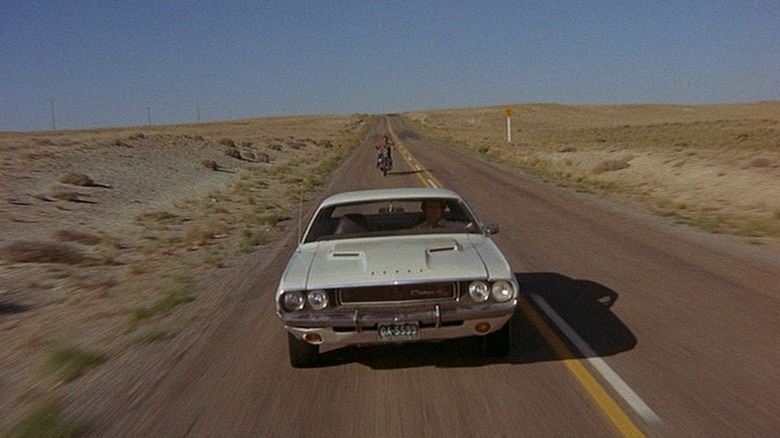
1971’s “Vanishing Point” is one of the most influential high-octane films ever made. Barry Newman plays Kowalski, a former professional race car driver who works for a vehicle delivery service. Kowalski heads to his drug dealer to stock up on amphetamines after receiving a task to transport a 1970 Dodge Challenger from Colorado to San Francisco. A deal is struck: The drugs are free if he gets to his destination within 15 hours. Our lead, despite various setbacks, is determined to reach his goal, even as he runs from highway police.
“Vanishing Point” is exhilarating. Its frenetic soundtrack rivals 1969’s fellow road trip classic, “Easy Rider.” Director Richard C. Sarafian also pushes Kowalski’s mechanical steed to its limits. As the car races down the highway, cinematographer John A. Alonzo uses stunning wide-angle shots and claustrophobic POV close-ups to enhance this sense of danger. Remember, this was shot before CGI — which is why watching the Challenger accelerate is so thrilling.
While “Vanishing Point” wasn’t initially successful, it’s now a cult favorite. There are several references to the movie in Quentin Tarantino’s “Death Proof” (including a stunt scene in the same car). In addition, Edgar Wright has cited “Vanishing Point” as inspiration for his 2017 action flick, “Baby Driver.”
Taste Of Cherry
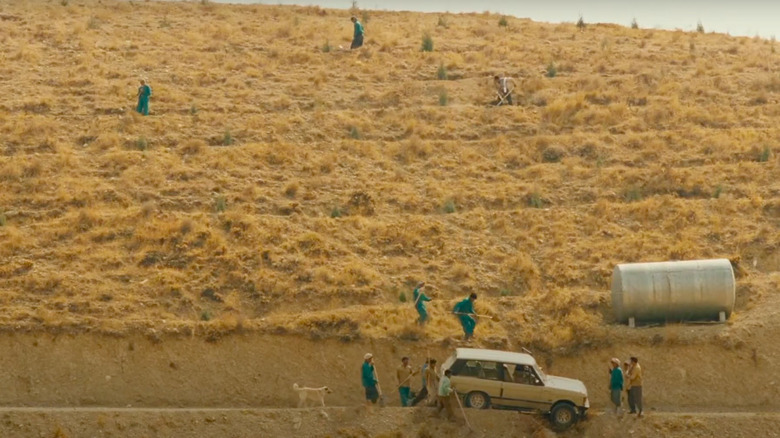
Abbas Kiarostami explored the concept of human resilience throughout the course of his filmography. This theme is exemplified in his 1997 road trip film, “Taste of Cherry.” In it, a Tehranian man, Mr. Badii (Homayoun Ershadi), is determined to die by suicide. Many characters try to talk him out of his goal as he drives around looking for someone to bury him under a cherry tree.
“Taste of Cherry” is deliberately slow, showing our protagonist’s disconnect from the world. As a metaphor, Mr. Badii’s car symbolizes the man’s isolation, like a floating coffin searching for a burial. Kiarostami’s minimalist approach works; even simple visuals like a pile of dirt on the ground convey Mr. Badii’s heartbreaking longing. Whenever we’re graced with dialogue, it’s honest and poignant. While various people chat to our lead in his car, Kiarostami’s camera takes a grounded approach, eschewing visual gimmicks. We sit in the passenger seat, watching quiet meditations about what it means to be alive.
Whenever I need some soul-searching, I reach for a film by Kiarostami. In particular, “Taste of Cherry” reminds us that despite life’s normality, beauty is always hidden within it. In the end, it does not matter whether Mr. Badii achieves his goal or not. His overarching journey is significant — a quest for the appreciation of life.
If you or anyone you know is having suicidal thoughts, please call the National Suicide Prevention Lifeline by dialing 988 or by calling 1-800-273-TALK (8255).
Duel
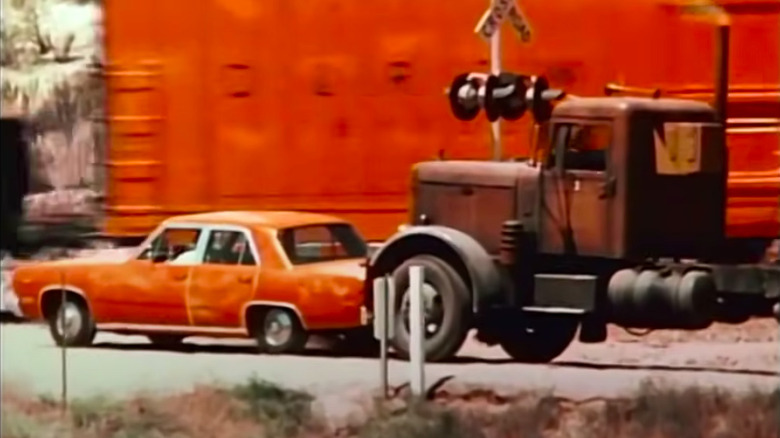
At 25, Steven Spielberg made his first feature-length debut on television, 1971’s “Duel.” As a result of the positive reception, Universal Pictures expanded its runtime and released it theatrically. “Duel” follows a mild-mannered businessman, David Mann, on a business trip. Passing a slow semi-truck, he enrages an unseen driver. His journey through the Mojave Desert is now fatal, as he runs from this psychotic enemy.
A significant source of inspiration in Spielbeg’s filmography is Alfred Hitchcock. Like 1975’s “Jaws,” Spielberg plays with the viewer’s emotions through the fear of the unknown. This is perfectly illustrated in a scene where Mann sits in a diner booth. Seeing the deadly vehicle parked outside, our hero glances at the bar, where he spots a gaggle of interchangeable truckers. The moment is terrifyingly psychological, a direct nod to the master of suspense himself.
“Duel” also tackles a theme of masculinity through its main character. In a phone call to his wife, Mann laments that he doesn’t feel like the macho head of their family. At one point, we also spot his car surrounded by barbed wire — a metaphor confirming his mental rut. As Mann races to outrun the truck, he also wants to regain his virility. “Duel” may not be perfect, but it’s an outstanding testament to the young filmmaker’s talent.
Dirty Mary, Crazy Larry
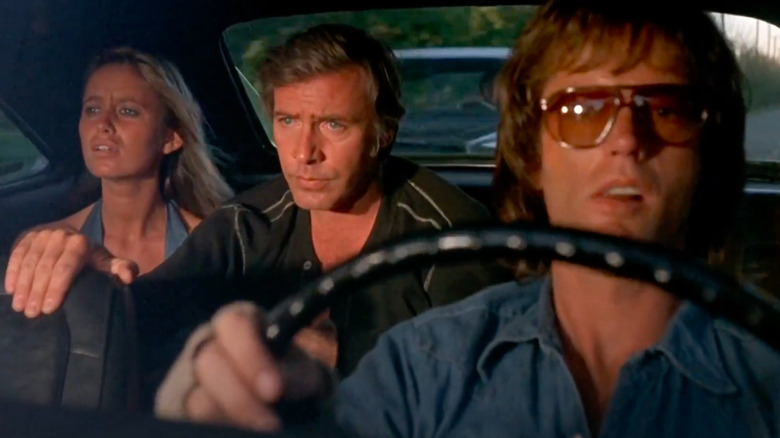
The 1974 film “Dirty Mary, Crazy Larry” is fast-paced, sleazy, and exhilarating. Peter Fonda stars as Larry, a washed-up NASCAR driver, while Adam Roarke plays Deke, his mechanic. In order to buy a new race car, they decide to rob a supermarket. As they run off with $150,000, Larry’s one-night-stand, Mary (Susan George), weasels her way into their getaway vehicle. A high-speed chase ensues as our three heroes try to outrun the police.
I went into this expecting a run-of-the-mill ’70s B-movie but was pleasantly surprised by the phenomenal chemistry between our three leads. “Dirty Mary, Crazy Larry” resembles another 1970s gem, “Vanishing Point,” but it’s more comedic. The dialogue is quick and snappy, while Roarke shines as the wary voice of reason among his nihilistic companions.
A quintessential carsploitation movie, “Dirty Mary, Crazy Larry,” has garnered a cult following since its release. Notably, the film’s fans include Quentin Tarantino. Along with shooting “Death Proof” at some of the same locations, he also thanked director John Hough in the credits. Meanwhile, in “Jackie Brown,” there’s a moment where Fonda’s daughter, Bridget, watches a scene from “Dirty Mary, Crazy Larry” on television.
Faster, Pussycat! Kill! Kill!
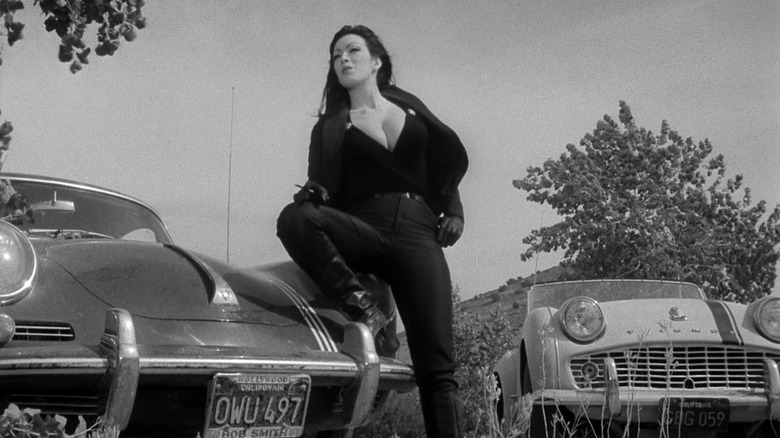
Grindhouse cinema features elements that can easily be exploited. Nudity, violence, and other taboos of the late 1960s and ’70s were always prevalent in these scuzzy movies. “Faster, Pussycat! Kill! Kill!” was made by one of the most iconic directors of the genre, Russ Meyer, who injected a surprising amount of feminism into it.
Three go-go dancers take joy rides in the desert and seduce and kill men in “Faster, Pussycat! Kill! Kill!” Varla (Tura Satana) is the group’s aggressive leader. She dresses like a superhero in skin-tight leather, razor-sharp eyeliner, and a provocative bustline. These women are entirely in control of their bodies and fully capable of defending themselves — an impressive stance to take for a 1960s low-budget movie. According to Roger Ebert’s article in The Guardian, famous film critic of feminist and queer cinema, B. Ruby Rich, dubbed Meyer “America’s first male feminist director.”
Aside from its hilarious dialogue and gorgeous Mojave Desert location shots, “Faster, Pussycat! Kill! Kill!” also offers fantastic car chases. We see Meyer’s love for muscle cars in close-ups that appear as sensual as our three heroines. With fast cars and fast women, it’s no wonder this is a grindhouse staple.
A Taxi Driver
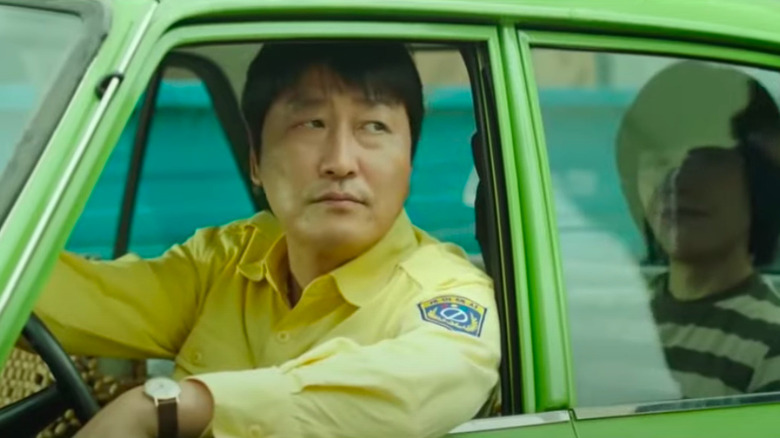
No, I’m not talking about Martin Scorsese’s beloved 1976 film, “Taxi Driver.” Instead, I want to shine a light on the 2017 South Korean drama, “A Taxi Driver,” which is based on true events. During the Gwangju Uprising of May 1980, the people of South Korea (mainly college students) participated in a violent protest, fighting for democracy against the newly installed military dictator Chun Doo-hwan.
Song Kang-ho plays Man-seob, a taxi driver and single father struggling to make ends meet. An opportunity to drive a German man from Seoul to Gwangju for 100,000 won catches his attention. Little does he know how dangerous the situation is. As the duo approaches Gwangju, they encounter numerous obstacles. It also turns out that Man-seob’s passenger is a reporter determined to highlight these atrocities.
“A Taxi Driver” won major acclaim from critics at the time of its release and was praised by President Moon Jae-in for portraying a significant moment in South Korean history. Director Jang Hoon weaves comedy, tenderness, and horrific violence together seamlessly. Featuring some beautiful location shots as our leads drive through the countryside, this 138-minute flick never gets boring.
Death Race 2000 (1975)
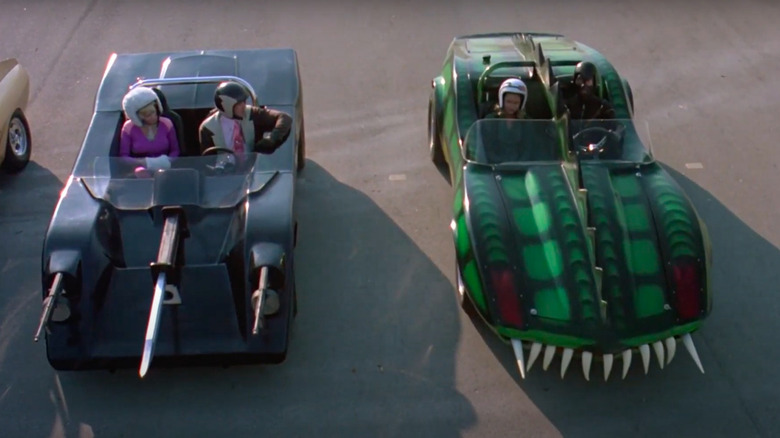
Before we fell in love with films and shows about deadly games like “Alice in Borderland” and “Battle Royale,” there was “Death Race 2000.” This 1975 cult classic was a pioneer of the genre, released a few months before the much more successful (and very similar) “Rollerball.”
The film depicts a dystopian version of America in 2000. Despite being under a totalitarian regime, people get excitement from a televised event every year: the Transcontinental Road Race. Participants in this race are divided into five teams and drive from New York to New Los Angeles. The catch? When drivers run over pedestrians, they get bonus points.
Listen, if you’re signing up to watch this one, don’t overthink it. “Death Race 2000” is a stereotypical B-movie full of violence, explosions, and comical dialogue. Having said that, director Paul Bartel knows what he’s doing. The film cleverly satirizes society’s obsession with mass media, sports, and violence. At the very least, if none of the above sounds interesting, watch it for Sylvester Stallone. Machine Gun Joe, played by Sly the year before became synonymous with Rocky Balboa, is a major highlight.
Bullitt
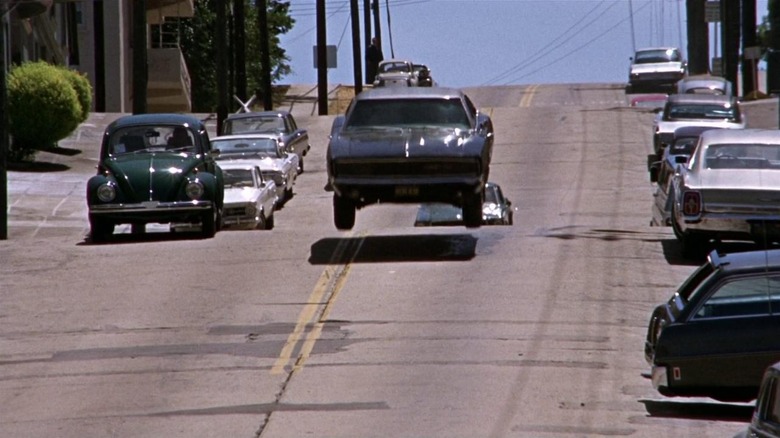
Despite being a police procedural, 1968’s “Bullitt” features one of the most famous car chase scenes ever. Don’t believe me? The seven-minute high-octane chase helped win editor Frank P. Keller an Oscar for best editing.
In “Bullitt,” we meet Steve McQueen’s eponymous character, a too-cool-for-school cop tasked with protecting an informant from Chicago gangsters. As a neo-noir, there’s plenty of double-crossing and deception. Undoubtedly, “Bullitt” delivers in the action department, but it also provides a salve for your anxiety. Argentine composer Lalo Schifrin’s original jazz score instantly transports you to a much more relaxed, cool environment.
You’ll want to watch “Bullitt” for its legendary car chase (duh). We get some genuinely nail-biting POV shots as the Ford Mustang and Dodge Charger literally glide down San Francisco’s elevated streets. I’d be remiss if I didn’t mention the airport sequence — watching Bullitt follow his prime suspect down the runway as a Boeing 707 passes him is just as thrilling as the famous muscle car pursuit.
The Great Race
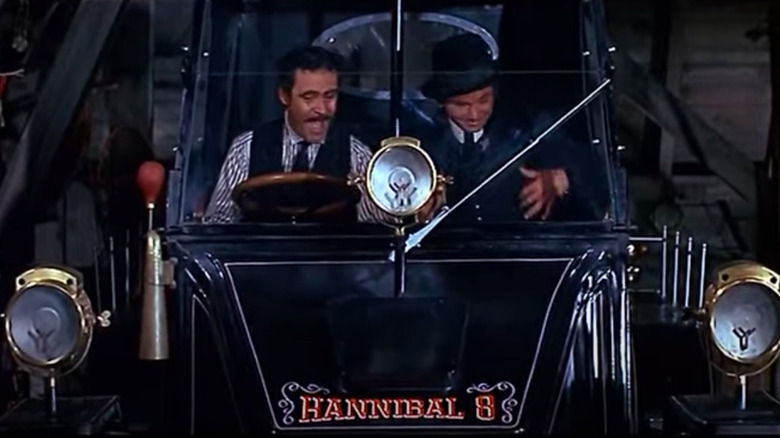
Blake Edwards’ 1965 joyride, “The Great Race,” includes everything you’d expect from the filmmaker of “Breakfast at Tiffany’s” and “The Party.” Despite his diverse filmography, Edwards was best known for his comedies, which often used elaborate visual jokes and deadpan verbal delivery. As a result, his style was similar to Laurel and Hardy’s.
Tony Curtis portrays the Great Leslie, a professional daredevil. He proposes a race from New York to Paris to turn-of-the-century car makers. To promote car sales, the Webber Motor Car Company develops Leslie’s vehicle, The Leslie Special. The Hannibal Twin-8″ is built by our lead’s rival, Professor Fate (Jack Lemmon). Also participating is a journalist and suffragette, Maggie Dubois (Natalie Wood).
“The Great Race” is just plain fun. Fate and Leslie play up hero-versus-villain stereotypes. Leslie is always clad in white, while Fate wears black and sports a thick mustache and top hat. Looney Toons-style sight gags make the comedy incredibly exaggerated. Obviously, you’ll want to watch this flick for the cars, too. Over $100,000 was spent by Warner Brothers to build custom vehicles for the film — both based on real-life cars that participated in the 1908 New York-to-Paris race (via Petersen Automotive Museum).
The Driver
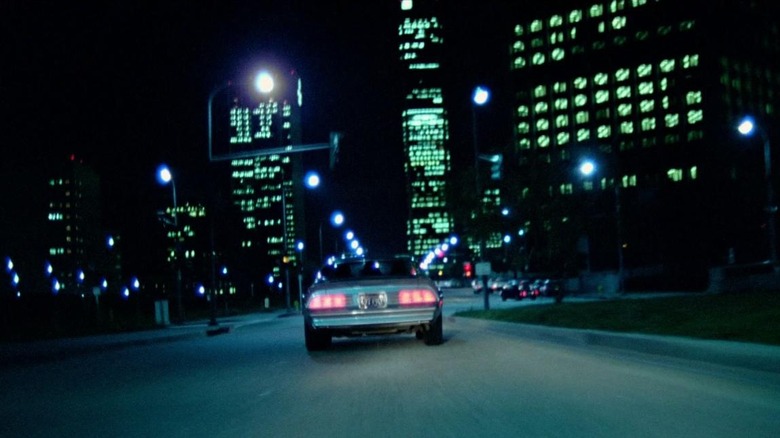
The French New Wave movement heavily influenced American Neo-Noir cinema. A perfect example is Walter Hill’s 1978 crime caper, “The Driver.” It is fascinatingly minimal and void of much dialogue, similar to Jean-Pierre Melville’s 1967 classic, “Le Samuraï.” Ryan O’Neal plays an unnamed getaway driver constantly escaping capture by the police. In contrast, Bruce Dern plays a detective obsessed with catching our lead by any means necessary.
“The Driver” doesn’t have a linear narrative; instead, it serves as an allegory: a warning against obsession. Each character represents a symbol rather than an individual. However, the movie is not just about an artsy atmosphere. Its 91-minute runtime is dominated by car chases, which are almost a third of the film. Hill’s camera placement makes for an astonishing experience, whether mounted on windshields, beneath cars, or even on curbs. At the movie’s climax, our lead plays a game of chicken. It’s a hair-raising sequence, and the subsequent car explosion makes you wonder how the stuntman survived.
At the time of its release, “The Driver” received poor reviews, but it has since gained a loyal following. In 2011, Nicolas Winding Refn’s “Drive” borrowed heavily from Hill’s film, both thematically and visually. When asked about the similarities by Collider, Hill shared, “It’s a very different movie. It has certain things, as Nic has told me, that are [homages] and that’s fine. It’s very complimentary.”
The Headless Woman
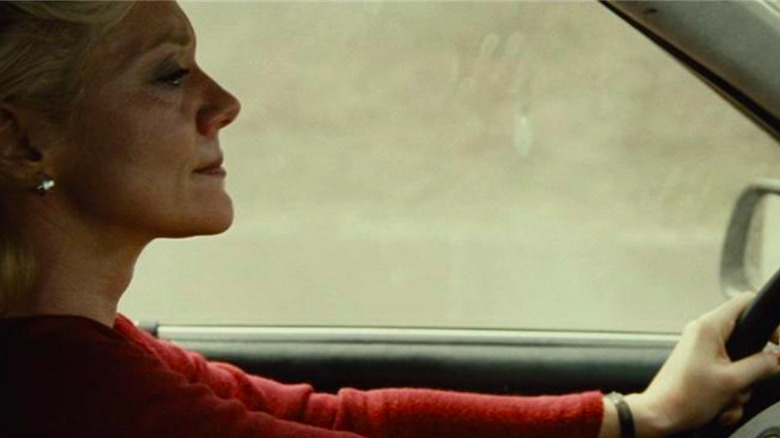
2008 Argentine thriller “The Headless Woman” follows Verónica (María Onetto), an upper-class woman who has struck something while driving. Director Lucretia Martel throws us for a loop here. Did Verónica hit an animal? In that case, wouldn’t it be in the middle of the highway? In addition, Martel includes a carefully placed handprint on the car window, suggesting a more severe accident. Indeed, our lead believes so. In any case, Verónica drives off.
As the 87-minute flick progresses, its title gains significance. Verónica doesn’t use her head — she never calls the police. Cinematographer Bárbara Álvarez cleverly cuts out our lead’s head from countless frames, further promoting the movie’s clever name. Water is also a repeated motif, suggesting Verónica is drowning in regret.
Most importantly, “The Headless Woman” focuses on Argentina’s class divide. Watching Verónica’s bourgeois companions interact with individuals of lower socioeconomic status illustrates this concept. Moreover, Verónica’s closest friends dismiss the accident after she reveals her situation. In an interview with Film Comment, Martel elaborated on this, noting, “On the one hand, that is beautiful in terms of human support, but it also contains all the roots of what’s evil about a social class: hiding facts, crimes even, and it leads to racism. It is the psychological basis of racism.”
Read this next: 17 ’80s Action Movies You Definitely Need To See
The post 12 Underrated Car Movies That You Really Need to See appeared first on /Film.
[ad_2]
Source link

